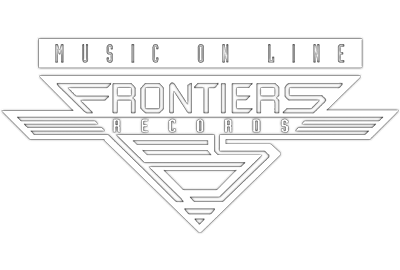Members
 1 Male
1 Male
Origin
 London, UK
London, UK
Genre
 Progressive Rock
Progressive Rock
Style
 Rock/Pop
Rock/Pop
Mood
 Rousing
Rousing
Born
Origin
Genre
Style
Mood
Born
3 users
3 users
3 users
3 users
3 users
Artist Biography
Available in:
Alan Parsons (* 20. Dezember 1948 in London),
In October 1967, at age 18, Parsons went to work as an assistant engineer at Abbey Road Studios, where he earned his first credit on the LP Abbey Road. He became a regular there, engineering such projects as Paul McCartney's Wild Life and Red Rose Speedway, five albums by The Hollies, and Pink Floyd’s The Dark Side of the Moon, for which he received his first Grammy Award nomination. He was known for doing more than what would normally be considered the scope of a recording engineer’s duties. He considered himself to be a recording director, likening his contribution to recordings to what Stanley Kubrick contributed to film. This is apparent in his work with Al Stewart's "Year of the Cat", where Parsons added the saxophone part and transformed the original folk concept into the jazz-influenced ballad that put Al Stewart onto the charts. It is also heard in Parsons' influence on the Hollies' "He Ain't Heavy, He's My Brother" and "The Air That I Breathe", sharp departures from their popular 1960s hits "Stay", "Just One Look", "Stop! Stop! Stop!" or "Bus Stop". Parsons was also known to have swapped shifts during the engineering of The Dark Side of the Moon so he could work entirely on the project.
Parsons also produced three albums by Pilot, a Scottish pop rock band consisting of Ian Bairnson on guitar, Stuart Tosh on drums, and David Paton on lead vocals, guitars,bass and William (Billy) Lyall, on piano and keys. Their hits included "January" and "Magic".
He also mixed the debut album by the American band Ambrosia and produced their second album Somewhere I've Never Travelled. Alan was nominated for grammys for both of these albums.
In 1975, he declined Pink Floyd's invitation to come back and work on the follow-up for "Dark Side," Wish You Were Here, and instead initiated The Alan Parsons Project with producer and songwriter (and occasional singer) Eric Woolfson, whom he had met at Abbey Road. The Project consisted of a revolving group of studio musicians and vocalists, most notably the members of Pilot and (on the first album) the members of Ambrosia. Unlike most rock groups, The Alan Parsons Project never performed live during its heyday, although it did release several music videos. Its only live performance during its original incarnation was in 1990, with Woolfson present but behind the scenes. After releasing ten albums, the last in 1987, the Project terminated in 1990 after Parsons and Woolfson split, with the Project's intended 11th album released that year as a Woolfson solo album. Parsons continued to release work in his own name and in collaboration with other musicians. Parsons and his band now regularly tour many parts of the world.
Although an accomplished vocalist, keyboardist, bassist, guitarist and flautist, Parsons only sang infrequent and incidental parts on his albums. While his keyboard playing was very audible on the Alan Parsons Project albums, very few recordings feature his flute. During the late 1990s, Parsons' career travelled an interesting full circle. Having started out in the music industry at the Abbey Road Studios in London as an assistant engineer in the late 1960s, he briefly returned to run the studio in its entirety. He reportedly managed to combine this role with the demands of a hectic performing and recording schedule. Parsons also continued with his selective production work for other bands.
Of all his collaborations, guitarist Ian Bairnson worked with Parsons the longest, including Parsons' post-Woolfson albums, Try Anything Once, On Air, and The Time Machine.
As well as receiving gold and platinum awards from many nations, Parsons has received ten Grammy Award nominations for engineering and production. In 2007 he received a nomination for Best Surround Sound Album for A Valid Path.
In May 2005, Parsons appeared at the Canyon Club in Agoura Hills, California, to mix front-of-house sound for Southern California-based Pink Floyd tribute band Which One’s Pink? and their performance of The Dark Side of the Moon in its entirety.
Since 2003 he has toured under a revised name, The Alan Parsons Live Project (with Woolfson’s permission). The globe-trotting band features guitarist Godfrey Townsend, drummer Steve Murphy, keyboardist Manny Focarazzo, and bass guitarist John Montagna. The 2004-2005 shows offered vocalist P. J. Olsson's track "More Lost Without You", while the later 2006 shows presented The Crystal Method-featured "We Play the Game" and opened with "Return to Tunguska" along with successes spanning the Project years.
Beginning in 2001 and extending for four years, Parsons conceived and led a Beatles tribute show called A Walk Down Abbey Road featuring a group of headlining performers such as Todd Rundgren, Ann Wilson of Heart, John Entwistle of The Who, and Jack Bruce of Cream. The show structure included a first set where all musicians assembled to perform each others' hits, and a second set featuring all Beatles songs.
In 2010, Alan Parsons released his single "All Our Yesterdays" through Authentik Artists. Parsons also launched a DVD educational series in 2010 titled The Art and Science of Sound Recording ("ASSR") on music production and the complete audio recording process. The single "All Our Yesterdays" was written and recorded during the making of ASSR. The series, narrated by Billy Bob Thornton, gives detailed tutorials on virtually every aspect of the sound recording process. Individual sections of the series are also being released in batches and are available to stream or download at www.artandscienceofsound.com.
During 2010, several media reports, one of which included a quote from a representative of Parsons, alleged that the song "Need You Now" by country music group Lady Antebellum possessed the melody and arrangement of "Eye in the Sky."
Wide Thumb

Clearart

Fanart




Banner

User Comments
 No comments yet..
No comments yet..

 100%
100%






